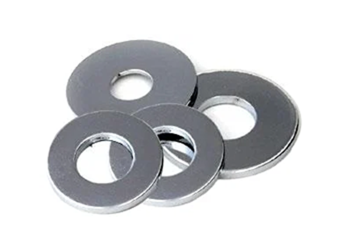Nov . 12, 2024 12:07 Back to list
anchor bolt ceiling
Understanding Anchor Bolts for Ceiling Installations
When it comes to structural and architectural projects, anchor bolts play a critical role in ensuring stability and safety. Particularly in ceiling installations, these fasteners provide essential support that can withstand various forces, making them a must-have for both commercial and residential applications. This article delves into the importance, types, installation methods, and considerations to keep in mind when utilizing anchor bolts for ceilings.
What are Anchor Bolts?
Anchor bolts are designed to secure structures to concrete or masonry. They provide a method to anchor various elements, ensuring they remain in place under tension and shear forces. In the context of ceiling systems, these bolts support load-bearing structures like beams, trusses, and even suspended ceilings. By providing a solid connection between the overhead element and the building’s structural framework, anchor bolts enhance the overall integrity and performance of the ceiling system.
Importance of Anchor Bolts in Ceiling Installations
The primary role of anchor bolts in ceiling installations is to secure the ceiling framework, which includes joists, girders, and other structural components. Without proper anchorage, these elements are susceptible to movement caused by various factors such as vibrations, environmental changes, and even seismic activity. In commercial buildings, stable ceilings are critical for maintaining operational safety, while in homes, they help prevent structural failures that could lead to costly repairs or, worse yet, injuries.
Moreover, well-installed anchor bolts facilitate easier installation of additional components like ceiling fans, chandeliers, and other fixtures, as they provide a secure base to work from. They also help distribute weight evenly across the ceiling, reducing the risk of sagging or collapsing over time.
Types of Anchor Bolts
anchor bolt ceiling

Anchor bolts come in various shapes and sizes, catering to different project requirements. The most common types include
1. L-shaped Anchor Bolts Designed with a bend at one end, these bolts fit well in concrete walls and secure heavy beams or supports. 2. Straight Anchor Bolts These bolts are straightforward in design, used for securing various fixtures where a direct installation into concrete is feasible. 3. Expandable Anchor Bolts These are particularly useful when additional holding power is needed. They expand against the side of the hole when a nut is tightened, providing a strong grip within the material. 4. Drop-In Anchors These are installed flush with the surface of the concrete and can be used where a clean finish is necessary, such as in visible ceiling areas.
Installation Considerations
While the installation of anchor bolts might appear straightforward, several crucial considerations must be addressed to ensure optimal performance
1. Material Choose the right material for your anchor bolts based on the environment. Stainless steel is ideal for humid or corrosive environments, while carbon steel works well in less demanding conditions. 2. Load Capacity Always calculate the load that the ceiling will bear, and select anchor bolts that have an adequate load rating. Consulting engineering specifications ensures safety and reliability. 3. Concrete Condition The quality and condition of the concrete where anchor bolts will be installed are vital. Cracked or weakened surfaces may not provide the required support. 4. Spacing and Placement Proper spacing between anchor bolts is essential for even load distribution. Follow manufacturer guidelines and engineering best practices to optimize performance.
Conclusion
In summary, anchor bolts are indispensable components in ceiling installations, providing the necessary support structures to ensure safety and stability. Understanding the types, installation methods, and crucial considerations associated with anchor bolts will enhance any project’s integrity, whether it’s a residential ceiling renovation or a large-scale commercial construction. By prioritizing quality and proper installation practices, builders and homeowners alike can rest assured that their ceilings are secure and well-supported for years to come.


